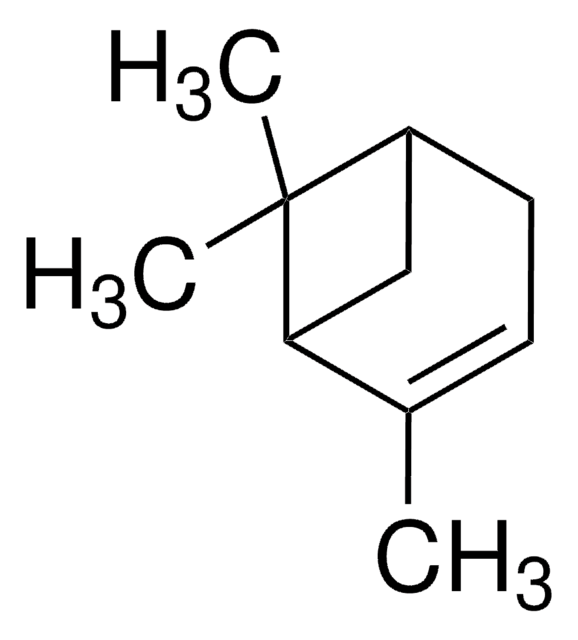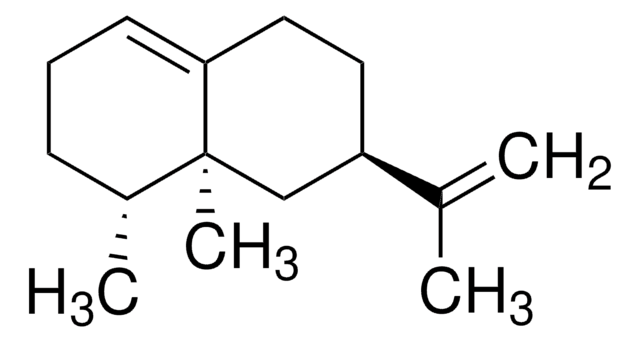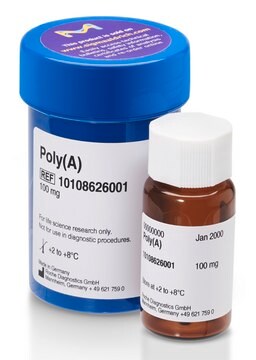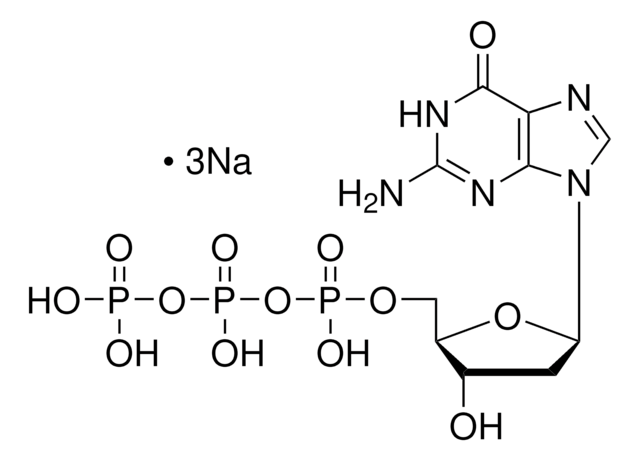A0410
Aminoallyl-dUTP sodium salt
≥85%, lyophilized powder
Synonym(s):
5-[3-Aminoallyl]-2′-deoxyuridine 5′-triphosphate, AA-dUTP
Sign Into View Organizational & Contract Pricing
All Photos(1)
About This Item
Empirical Formula (Hill Notation):
C12H20N3O14P3 · xNa+
CAS Number:
Molecular Weight:
523.22 (free acid basis)
MDL number:
UNSPSC Code:
41106305
NACRES:
NA.51
Recommended Products
Quality Level
Assay
≥85%
form
lyophilized powder
shipped in
dry ice
storage temp.
−70°C
SMILES string
[P](=O)(O[P](=O)(OCC1OC(CC1O)N2C=C(C(=O)NC2=O)\C=C\CN)O)(O[P](=O)(O)O)O.N
InChI key
YWKTUHBZWBRYHX-TYYBGVCCSA-N
Looking for similar products? Visit Product Comparison Guide
Application
Aminoallyl-dUTP may be used for indirect stable labeling of first-strand cDNA synthesis via polymerase chain reaction (PCR). Aminoallyl-dUTP functions as a reactive site for subsequent labeling by reactive fluorescent probes. Aminoallyl-dUTP may also be useful in the construction of reactive DNA scaffolds.
Aminoallyl-dUTP sodium salt has been used:
- to add to the deoxynucleoside triphosphate mix for complementary DNA (cDNA) synthesis
- for the generation of chromatin immunoprecipitation (ChIP) probes
- in the reverse transcription of RNA for the synthesis of fluorescent labelled probes
Biochem/physiol Actions
Aminoallyl-dUTP sodium salt/5-(3-aminoallyl)-2′-deoxyuridine 5′-triphosphate (aa-dUTP) have been used mainly in two-step labeling approach for the synthesis of nucleic acid hybridisation probe.
Storage Class Code
11 - Combustible Solids
WGK
WGK 3
Flash Point(F)
Not applicable
Flash Point(C)
Not applicable
Personal Protective Equipment
dust mask type N95 (US), Eyeshields, Gloves
Choose from one of the most recent versions:
Already Own This Product?
Find documentation for the products that you have recently purchased in the Document Library.
Customers Also Viewed
Probe production for in situ hybridization by PCR and subsequent covalent labeling with fluorescent dyes.
Dirsch O, Ji Y, Bohr J, et al.
Appl. Immunohistochem., 15, 332-337 (2007)
W Gregory Cox et al.
BioTechniques, 36(1), 114-122 (2004-01-27)
Fluorescent nucleic acid hybridization probes traditionally have been generated by enzymatic incorporation of dye-labeled nucleotides, even though incorporation efficiency is low and variable from dye to dye. Alternatively, 5-(3-aminoallyl)-2'-deoxyuridine 5'-triphosphate (aa-dUTP) is enzymatically incorporated to generate amine-modified DNA, which is
Xue-Qin Gao et al.
World journal of gastroenterology, 13(3), 341-348 (2007-01-19)
To identify tumor associated genes of rectal cancer and to probe the application possibility of gene expression profiles for the classification of tumors. Rectal cancer tissues and their paired normal mucosa were obtained from patients undergoing surgical resection of rectal
Kevin K Fuller et al.
mBio, 4(2) (2013-03-28)
Light is a pervasive environmental factor that regulates development, stress resistance, and even virulence in numerous fungal species. Though much research has focused on signaling pathways in Aspergillus fumigatus, an understanding of how this pathogen responds to light is lacking.
Effect of the Colorless non-ripening mutation on cell wall biochemistry and gene expression during tomato fruit development and ripening
Eriksson E M, et al.
Plant Physiology, 136(4), 4184-4197 (2004)
Our team of scientists has experience in all areas of research including Life Science, Material Science, Chemical Synthesis, Chromatography, Analytical and many others.
Contact Technical Service








